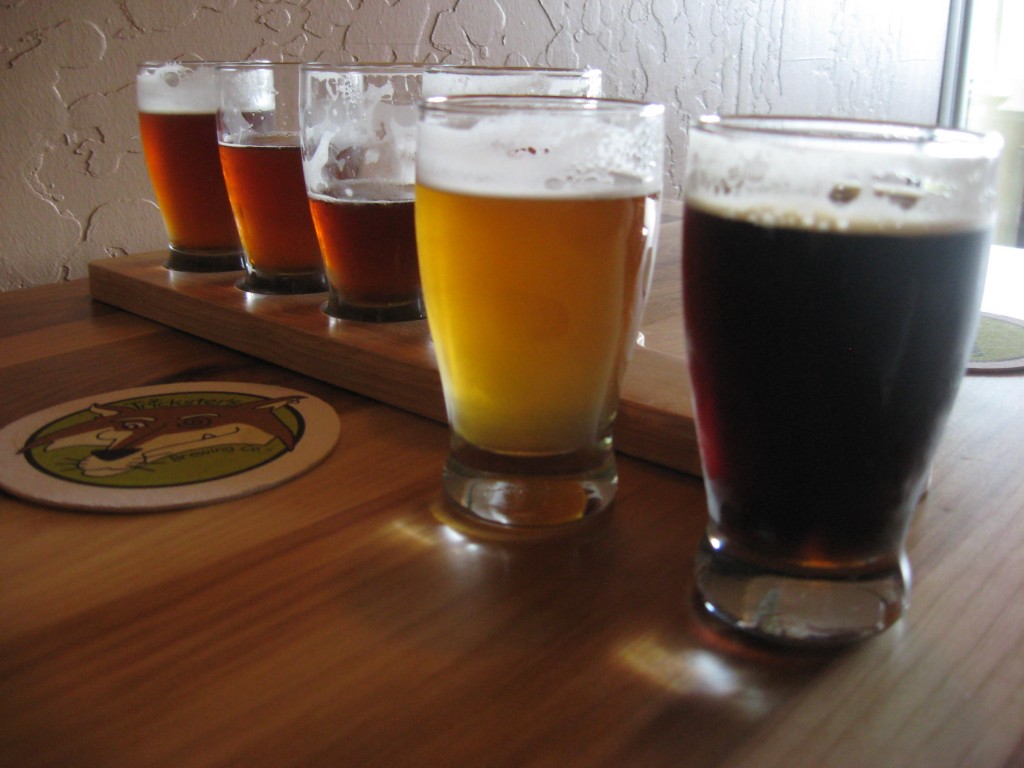
Manor house on the corner of Tottenham Court and Oxford, 1813
Written by “Mary” at girlmeetsfood.com
St. Giles Rookery in central London, was the name of a crowded slum area where entire families lived in small rooms. It inspired the neighborhoods in many Charles Dickens’ novels.
It was also a notorious refuge for thieves, prostitutes and criminals.
In this downtrodden section of London, at the corner of Tottenham Court Road and Oxford Street, stood the Horse Shoe Brewery, owned and operated by Meux’s Brewery Company.
In 1814, the Horse Shoe had several large vats of beer fermenting, the biggest one a 22-foot-tall tank holding over 135,000 gallons of beer, held together by 29 heavy iron hoops.
One sunny day, storehouse worker George Crick noticed a small crack in one of the hoops and let the vat builder Mr. Young know.
“It will be fine, George,†Mr. Young said. He explained that each hoop weighed 500 lbs., and there were 28 others to support it. (Mr. Young wouldn’t have said that if he knew what happened in The Boston Molassacre.)
After weeks of straining under extreme pressure, the vat exploded on the evening of Monday, October 17, the sheer force of the liquid slamming into the surrounding vats.
A domino effect caused a wave of over 323,000 gallons of beer to blast through the 25-foot-high brick wall of the building, and into the surrounding neighborhood.
The rogue ale destroyed two houses, damaged others and the Tavistock Arms pub, killing 14-year-old barmaid Eleanor Cooper. Mary Mulvey and her 3-year-old son, Thomas, also drowned in their home.
Dozens of people were caught up in the beer tsunami and washed down the street along with debris and rubbish.
Alarmed that all that precious brew would go to waste, people ran out into the streets to collect what was left in pots, pans, and kettles. Some people simply bent down to slurp up the dirty puddles of beer.
Chaos erupted at the nearby hospital as the beer-soaked survivors arrived in drones. Convinced there was a beer bash they were missing, other patients arose from their beds, shook their fists and demanded pints of their own.
In the end, it took weeks for the smell of beer to finally fade. Nine people lost their lives, eight from drowning and one due to alcohol poisoning the next day. The survivors, already desperately poor, lost all their earthly possessions in the flood.

1931 postcard of Tottenham Court Road. The Dominion Theatre, site of the former brewery is at the far right.
Some of the relatives of the victims resorted to exhibiting the corpses in their homes for a fee.
Crowds gathered, and one house was so filled with spectators that the floor gave out and plunged everyone into a cellar full of beer.
Apparently we didn’t learn our lesson the first time.
The police eventually found out and shut down the morbid freak shows. Meaux Brewery was charged with the accident, and taken to court. The judge ruled the tragedy as an act of God and no earthly party responsible.
Meaux Brewery continued to operate until 1961, when it was sold to Friary, Holroyd and Healy’s Brewery of Guildford.
Gives a whole new meaning to “beerfest.â€

